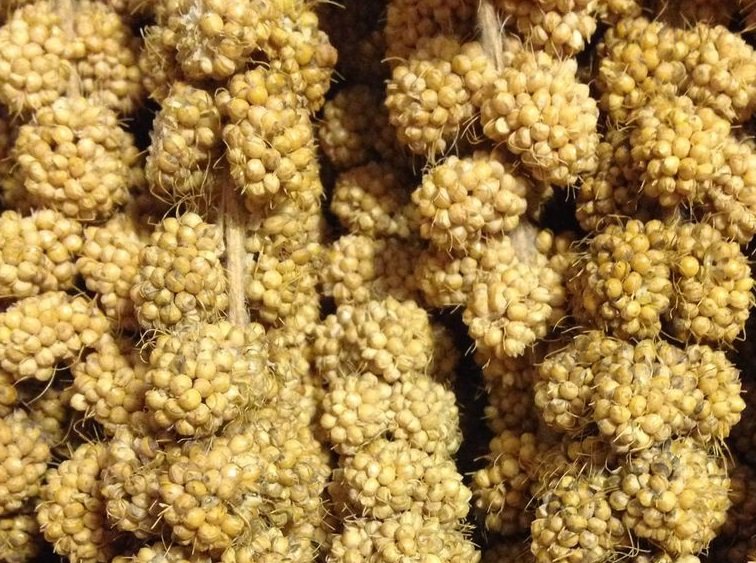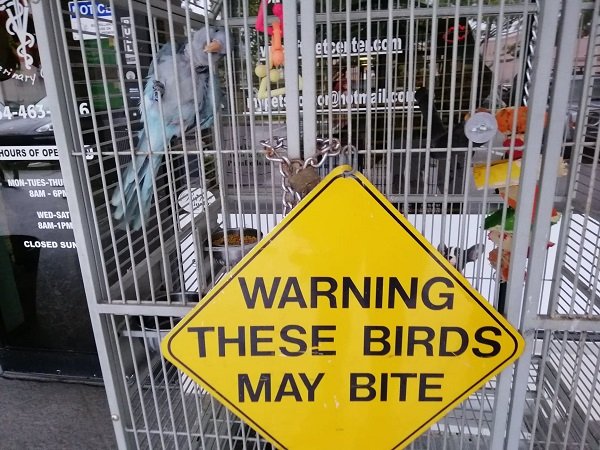Quaker parrots are wild birds. Native to Argentina and the regions circling South America, Quakers made themselves comfortable inside many urban homes early on. Reports prove them to be little bullies, who if not disciplined in the beginning, transform into an aggressive and nippy bird pet. Thus, it is always advised to tame a quaker quickly.
Contrary to the belief, Quakers can be tamed easily, albeit with a little patience and smart techniques. These parrots have the brain of a 2-year old human baby. Treating them as equivalent to a human baby is the easiest tip to tame a newly added quaker chick. Let’s get started even quickest.
Starting the taming process
A lot about the taming process depends on the Quaker parrot you bought. Did you get your parrot from a Big Pet shop that is mass selling parrots? Or you got your parrot from a small breeder that cares about raising baby parrots.
If you got your parrot from a breeder that is involved in raising Quaker babies. If they are hand-fed chicks it is really hard to mess things up.
Hand-fed Quakers are already tame, and comfortable being around Humans. Actually, once you raise “properly” these hand-fed parrots they will be more comfortable around Humans than around other parrots.
How to make my tame Hand-fed Quaker stay tame?
Once you get your Hand-fed Quaker baby home your job does not end there. They are social animals and they still NEED human interaction. Spending time with your Quaker daily is a must. Try to spend at least a few hours daily with him besides doing daily cage maintenance duties.
If you don’t force some biting behavior by teasing him with your hand. And if you spend enough time with him daily. And let him roam around your room daily, making him occupied. You will have a healthy and tame bird.
How to tame a Wild Quaker Parrot from Pet Shop
And now more difficult situation. You bought your parrot from Petshop. I know there are some shops that care about parrots. But it is hard if you have thousands of birds that are coming and going from the shop. They get transported from breeders to shops. All that experience takes a toll on the parrot.
Quaker parrot that comes from those Big Pet Shops are usually stressed, and afraid of people. And it takes a lot of patience to tame these guys.
Placing the Cage
Place the cage in the room that doesn’t receive so much traffic. The Quaker may be shy at first, and shouldn’t immediately be kept in the living room. It would be too loud for him. That said, don’t keep him in an isolated room either.
He is new and being a social bird, needs companionship. Allow him some time to adjust to the environment. Let him be friendly with you, your family members, and the general background noise in the home. It forms the first step to bond with a newly adopted Quaker.
To start with, it is important to gain Quaker’s trust. One will only be able to develop a bond with the bird if the bird trusts back. Initially, just simply roam around the cage. Don’t talk to him or look at him directly, just be there, and let the bird observe this. Once he’ll know that it’s his new family, he’ll start placing his trust in his human companion.
Start Interacting
Start with spending at least an hour near the bird’s cage daily. Do not touch him in this step. Quakers can sometimes get scared. One can also interact with him by responding to his actions. Talk softly.
Moving the Cage
Once the Quaker parrot gets friendly with the family and comfortable with the environment, take him to the busiest room and spend a lot of time with him. It can be in or out of the cage. Being extremely social, Quakers need too much attention.
Offer Food rewards
A secret of successful Quaker taming is motivation. Keeping him motivated will always help in advancing quickly. Just like every being on the planet, a pet Quaker also wants some rewards. It would work great to keep the bird motivated. If the bird isn’t rewarded well for all his good efforts, he may not continue his winning streak. The best kind of motivation is ‘food rewards’.
Quakers generally eat in the morning. The ideal time for training happens to be the same. It is advisable to tame the Quaker when he is the hungriest.
I noticed that training a parrot in the evening is not the best time. Just before sleep time, they are not in the mood to be moved.

Try to make him comfortable with your hand by offering him millet seeds from your hand. Take some millet seeds in your hand and get your hand slowly near the parrot. Make sure seeds are visible. Move your hand slowly towards the parrot and if he starts panicking slowly move your hand away.
Don’t force interaction. If he is panicking too much. Leave your hand at a distance. And stay like that until he gets interested in millet seeds. Repeat feeding from hand daily until he gets comfortable with hand.
Once the taming session is over, offer him plenty of food and let him eat all he wants.
Step Up Taming
At this stage, the bird already knows that his human companion is trying to teach him. And the best part is, being an inquisitive being, the quaker is curious too. After all the above steps, it shouldn’t be difficult to tame stepping up.
Use a perch for step-up taming. It will also save one’s hand from his bird’s beak. Don’t be forceful, just take the perch closer and closer and say ‘Up’. As mentioned above, up is referred to as ‘step up’ and the bird already has an idea of this by now.
Once the Quaker understands what he needs to do on this command, it’s time to teach him ‘down’. Now say ‘down’, to step him on another object. It may include a hand or object stepping. Practicing a few sessions will provide the perfect outcome eventually.
Taming & Handling
Once the Quaker has learned to step up and down, it’s time to make him comfortable with hand touch and handling. The part of his body to start with is his beak. Try touching his beak first, but make sure not to put the hand where it can get bitten. Start touching the bird’s head slowly. Make sure to be soft in touch.
If he tries to bite the hand, stop there only. Wait until he calms down. Use the same technique to make the bird comfortable with the body touch. Take it slow and move ahead step by step. Handle with softness. With careful efforts, one can successfully tame his Quaker quickly.
Let Him Get to Know Your Home
Now, open the doors of his cage. But before opening the doors, close all the other doors and windows around. This would prevent any mishappening. Also, cover mirrors and draw the blinds.
Opening the cage allows him to explore his new home. This is the point when the basic training gets started. At this point, one can also teach the bird to step on the hand.
Making Him Understand the Words
For the basic training, start with some simple words. The 4 best ideas to tame a Quaker to understand the basic words are:
Up: Tell him to step on your hand or perch.
Down: Tell him to step on an object other than the hand.
No: Tell him to stop what he is doing.
Ok: Tell him that the behavior is allowed.
These four simple commands are very easy to start with. Also, the Quaker will understand them real quick. When a Quaker is trained on command, he always follows the command.
Don’ts while Taming a Quaker Parrot quickly
Where it is imperative to know the do’s of taming a quaker quickly, it is important to keep in mind all the don’ts also. One wrong move might bring the training back to square-A. Hence, to keep all the effort going down the drain, always follow certain basic yet important don’ts:
Never place the quaker’s cage much above or below the eye-level. This makes the bird perceive humans as his predators. The ideal height of cage placement is at the eye-level. The training would be fruitful only if the bird is comfortable in his new home.
While turning the radio or TV on to offer the bird a pleasant environment, make sure to steer clear of all the noisy music or content. Quakers are known to be great mimics and can sometimes copy the sounds even after hearing them once. If such sounds happen to be slangs, verbal abuses, or similar unpleasant voices, the bird might pick them too.
If there are kids at home, make sure their screams don’t reach the bird. With the brain of a 2-year old, Quakers love to win a screaming-battle like this. And it is generally difficult to erase all such bad behavior easily.
In case the bird has caught on some bad behavior knowingly or unknowingly, it is extremely important to discourage it from the very beginning. Expressing displeasure with a stern voice and not giving in to his bratty ways is the best solution.
Never house a newly-adopted quaker with the other pet birds of the house. The bird, then, would be more interested in his flock-types rather than paying attention to his teaching sessions. He might never be tamed again then.
Summing Up
Bonding and taming a quaker seems like a daunting task for few, especially if one is a beginner. Also, the past of the bird makes an impact on his training sessions. But in either case, choosing the right attitude is the key. Have patience with the bird. Do not be harsh with him. Do not forget to appreciate him after each right behavior. This will also work as motivation. The bird may not understand what is expected from him but he’ll know that he is being valued. And this technique works well enough to tame the bird, sometimes even within a few days only.


